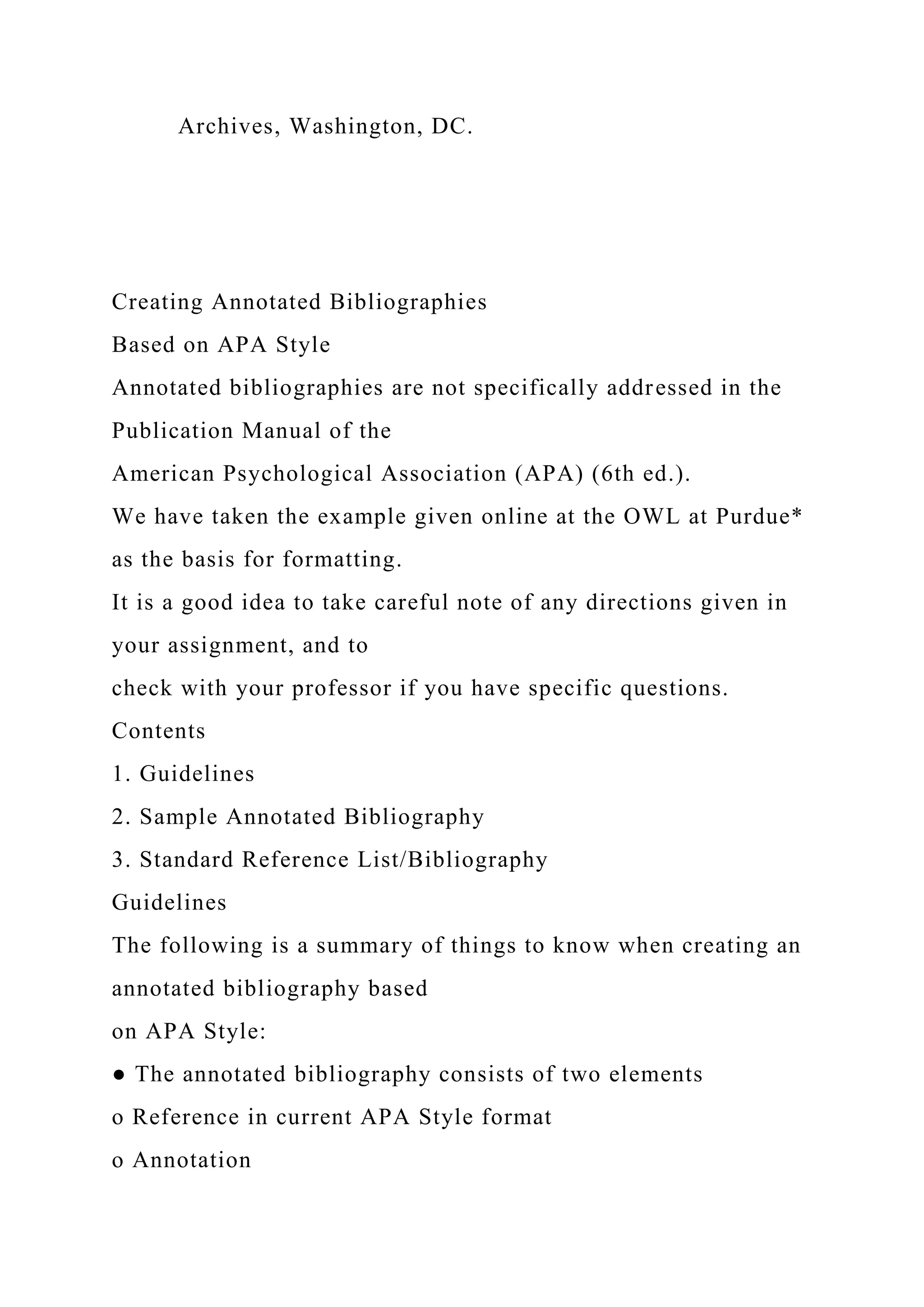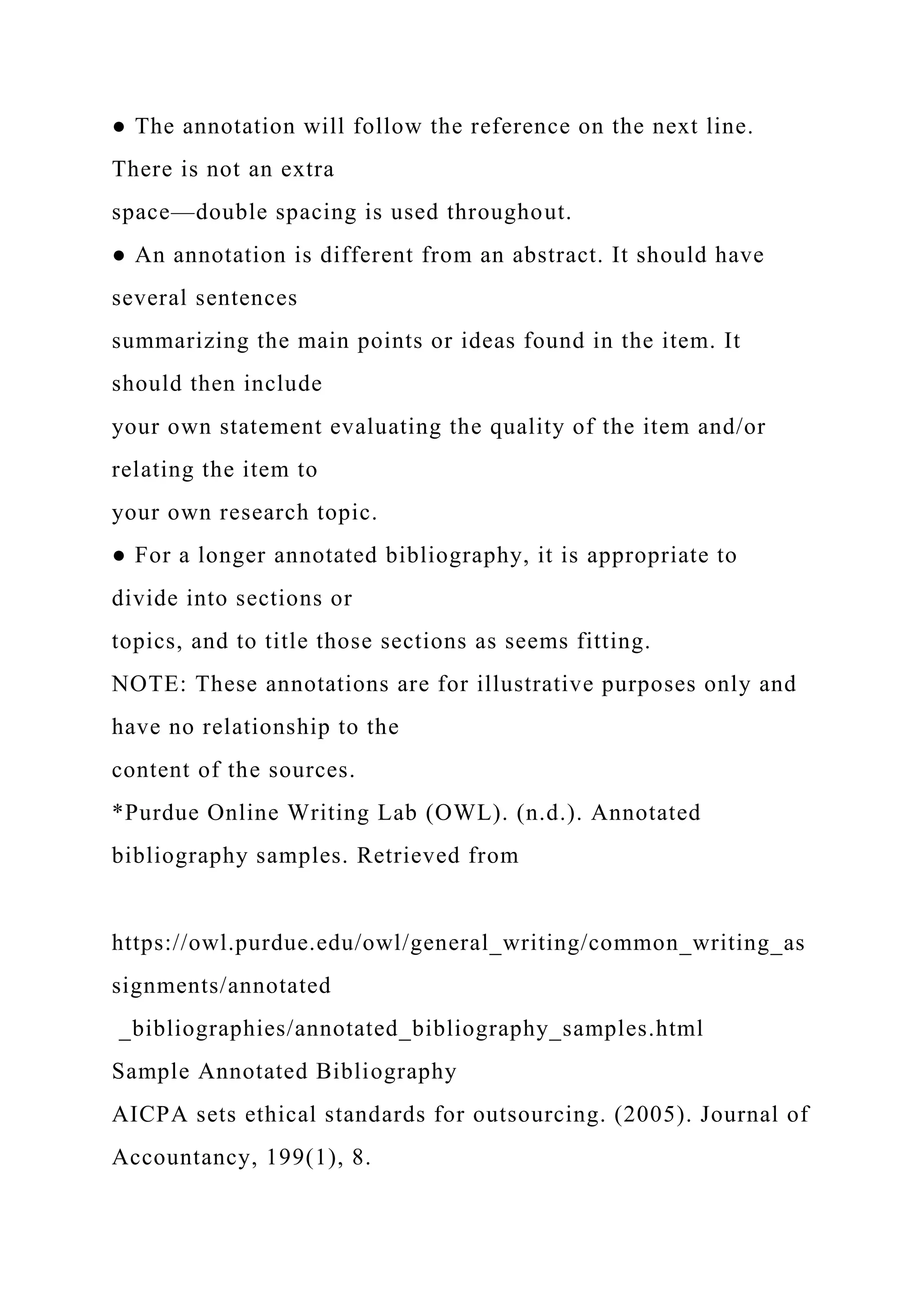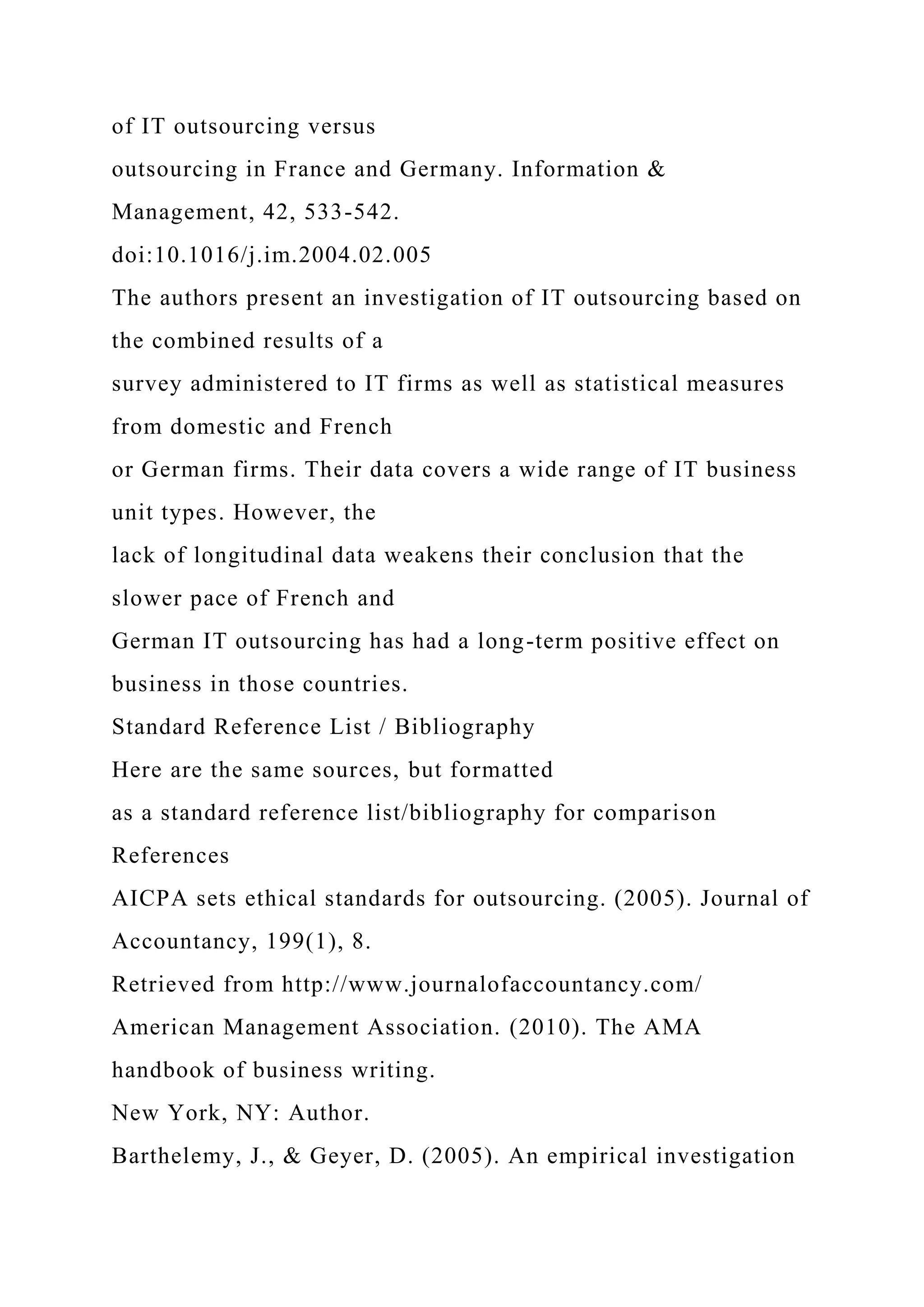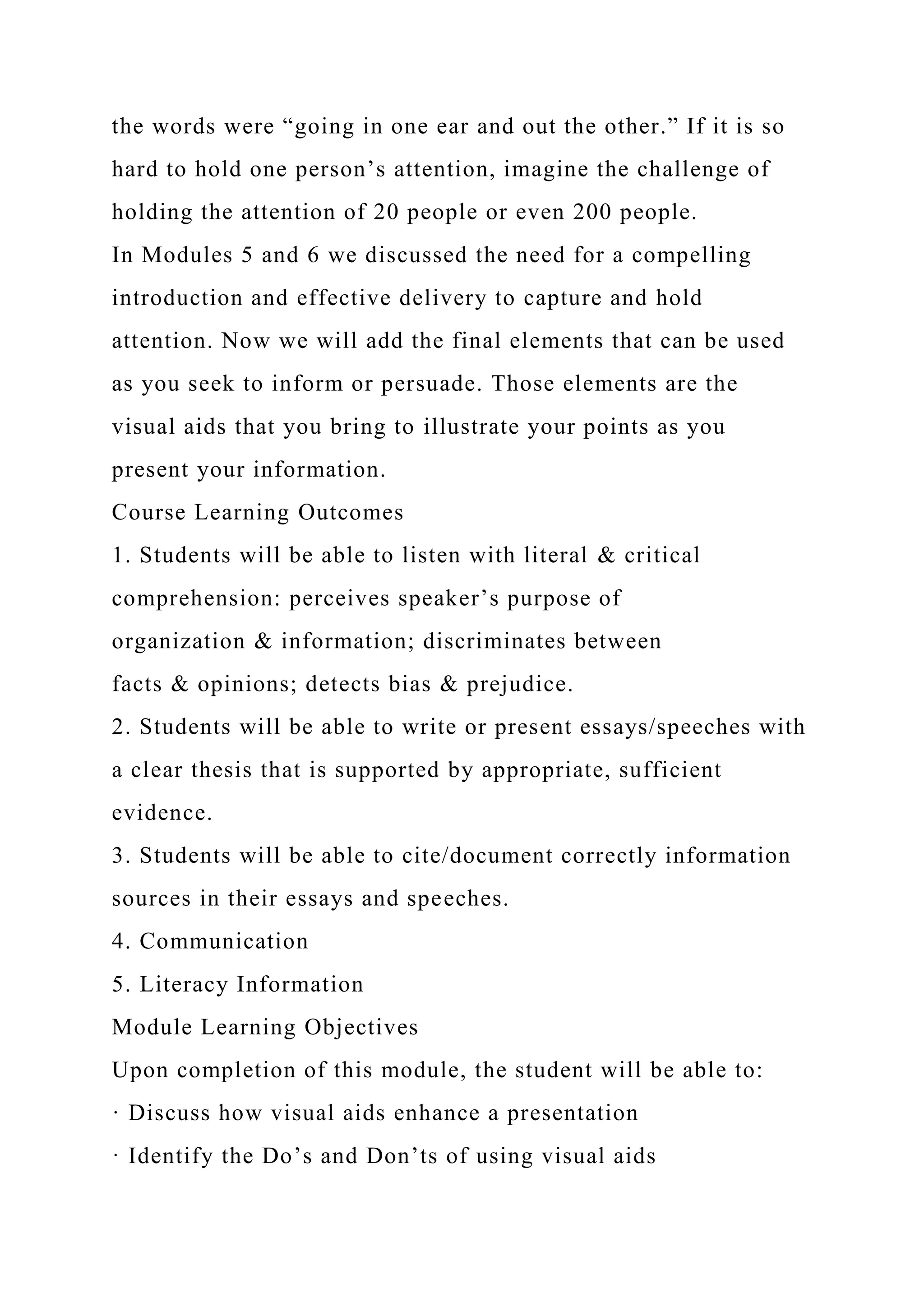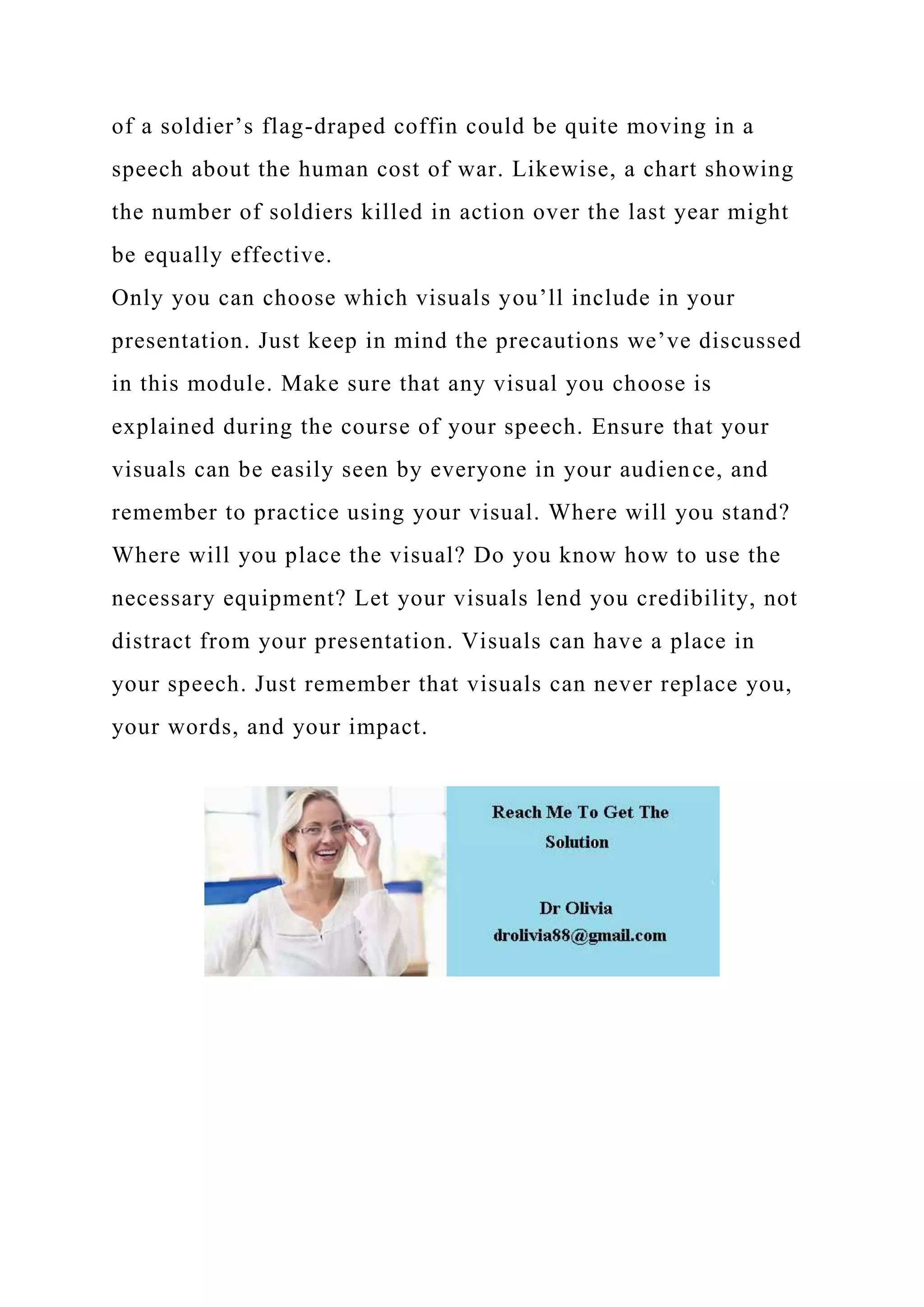The document provides a detailed persuasive speech outline template, emphasizing the structure of an effective speech including introduction, body, and conclusion, along with guidance on citing sources in APA format. It also discusses various types of incentive plans, their appropriate application in organizational contexts, and the potential challenges in ensuring equitable incentive structures. Additionally, it highlights the importance of ethical considerations in designing these plans and references supporting resources for further exploration of the topic.
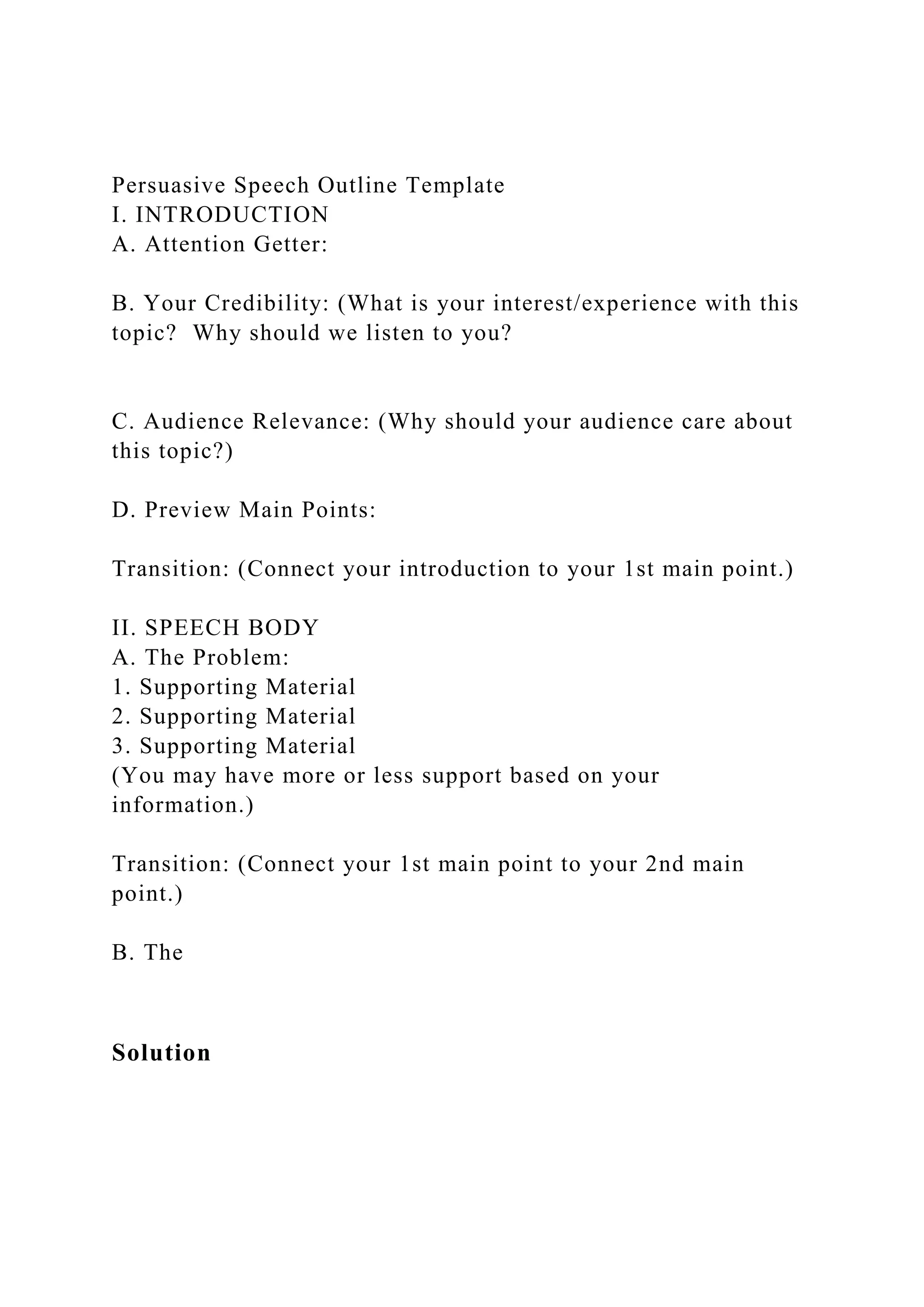

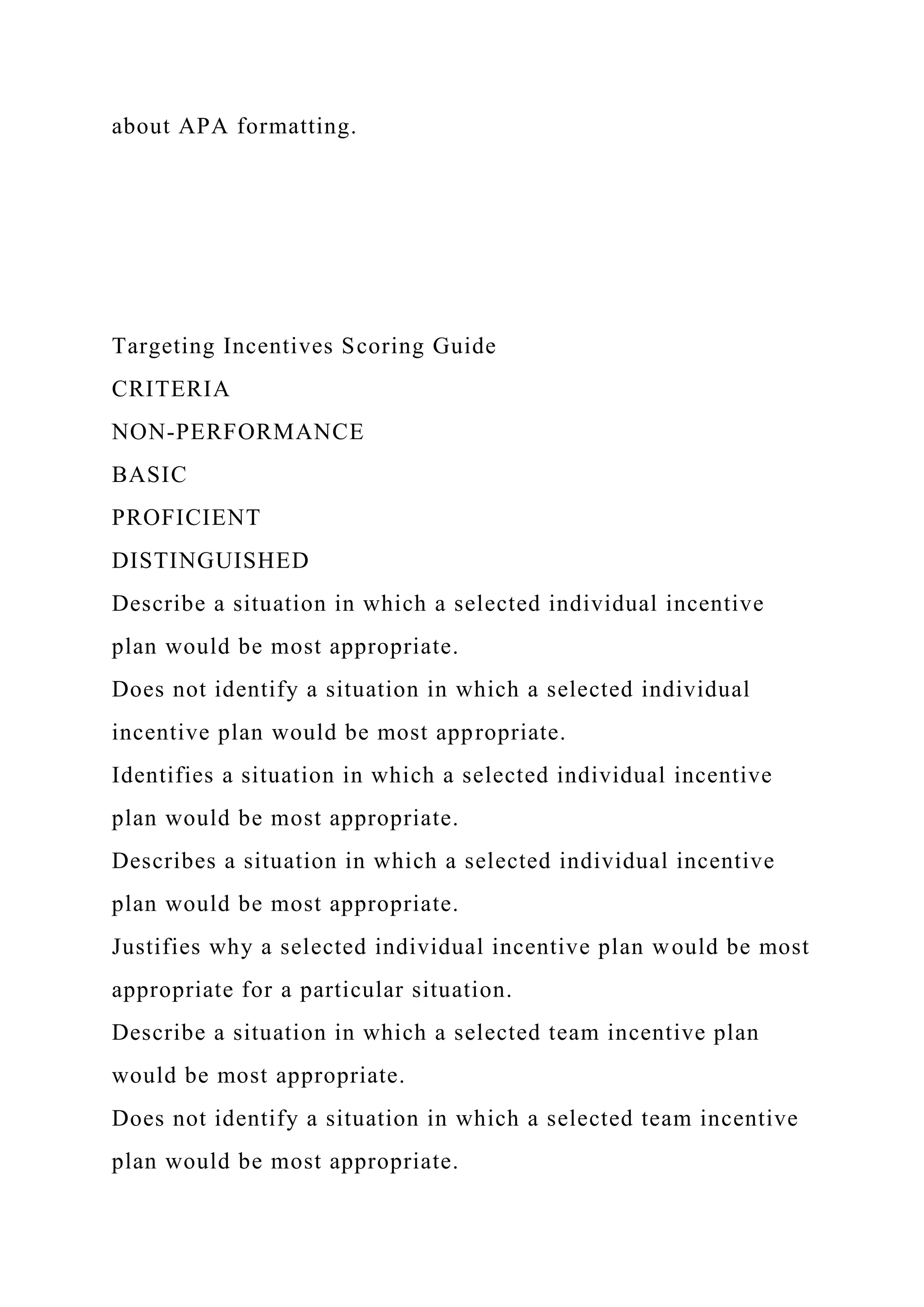
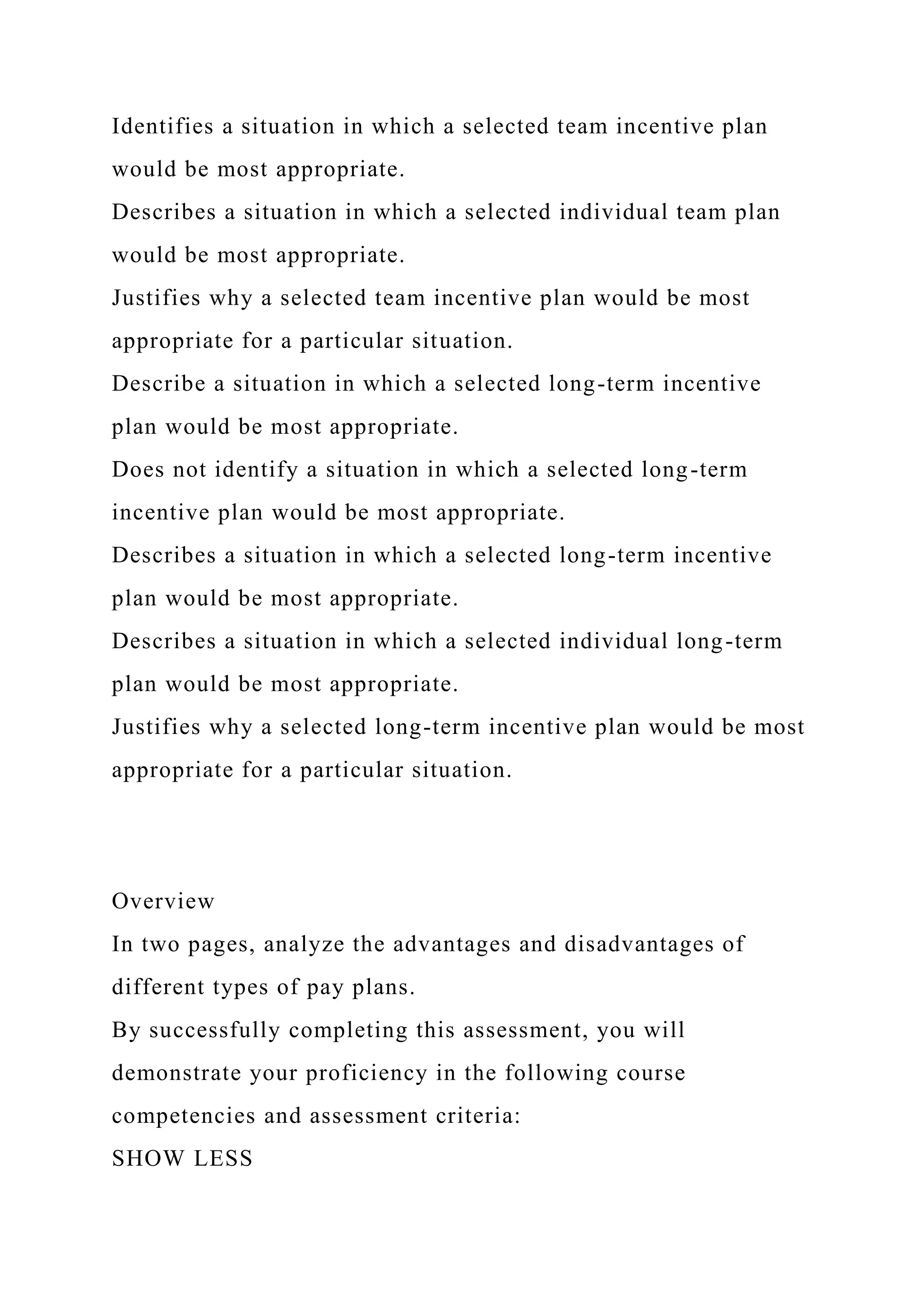




![appropriate but also requires a narrative describing the
situations. Be sure to use proper APA (6th edition) style and
formatting.
APA Quick Reference Guide
Book [APA Manual, p.202-203]
Author, A., Author, B., & Author, C. (Year of publication).
Title of book: Capitalize first letter in subtitle. Place of
publication: Publisher.
Example:
Spellman, F. & Whiting, N. (2005). Environmental engineer’s
mathematics handbook. Boca Raton, FL: CRC Press.
Book Article or Chapter [APA Manual, p. 204]
Author, A. (Year of publication). Article or chapter title:
Capitalize first letter in subtitle. In A. Editor, B. Editor (Eds.),
Book title: Capitalize first letter in
subtitle (# ed., pp.#). Place of publication: Publisher.
Example:
Donnerstein, E. (2005). Is popular culture too violent? Media
violence promotes violent behavior. In J. Woodward (Ed.),
Popular culture: Opposing
viewpoint (pp. 114-119). Detroit, MI: Thompson Gale.
Journal Article [APA Manual, p. 198-199]
Author, A. A. (Year of publication). Article title. Title of](https://image.slidesharecdn.com/persuasivespeechoutlinetemplatei-221014153623-5dc8564d/75/Persuasive-Speech-Outline-TemplateI-INTRODUCTIONA-Attention-docx-9-2048.jpg)
![journal, Volume(issue), page(s).
Example:
Wilson, L. D. (2004). On tests, small changes make a big
difference. Teaching Children Mathematics, 11(3),134-137.
Magazine Article [APA Manual, p.200]
Author, A. A. (Year, Month Day of publication). Article title.
Title of magazine, # of volume(# of issue), page(s).
Example:
Ramirez, J. (2007, April 16). How to live a greener life.
Newsweek, 149(16), 82.
Newspaper Article [APA Manual, p.200]
Author, A. B. (Year, Month Day of publication). Article title.
Title of newspaper, p. SectionPage.
Example:
Brown, R. (2009, December 16). Long faces ethics complaint.
Dalton Daily Citizen, p. A1.
Encyclopedia Article [APA Manual, p.203]
Author, A. (Year of publication). Entry title. In A. Editor &
B. Editor (Eds.), Title of encyclopedia (Vol. #, pp. #). Place of
publication: Publisher.
Example:
Richelle, M. N. (2001). Skinner, Burrhus Frederick (1904-
1990). In N. Smelser & P. Baltes (Eds.), International
encyclopedia of the social and
behavioral sciences (Vol. 21, pp. 14141-14146). New York,](https://image.slidesharecdn.com/persuasivespeechoutlinetemplatei-221014153623-5dc8564d/75/Persuasive-Speech-Outline-TemplateI-INTRODUCTIONA-Attention-docx-10-2048.jpg)
![NY: Elsevier.
Motion Picture [APA Manual, p. 209]
Producer, A. (Producer), & Director, A. (Director). (Year of
release). Title of movie [Motion picture]. Country of origin:
Studio.
Example:
Caroll, G. (Producer) & Rosenberg, S. (1991). Cool hand Luke
[Motion picture]. United States: Warner Bros.
Video [APA Manual, p. 209]
Producer, A. (Producer), & Director A. (Director). (Year of
release). Title of video [format]. Available from Producer
name and mailing or web address.
Example:
Classroom Productions (Producer). (2008). Cultural awareness
in healthcare [DVD]. Available from
www.classroomproductions.com
Reports [APA Manual, pp. 205-206]
Author, A. (Year of publication). Title of report (Report #).
Location: Publisher.
Example:
Bauman, K. (2003). Educational attainment, 2000 (Census
2000 brief; C2KBR-17). Washington, DC: U.S. Government
Printing Office.
Website [APA Manual, p.187-192]](https://image.slidesharecdn.com/persuasivespeechoutlinetemplatei-221014153623-5dc8564d/75/Persuasive-Speech-Outline-TemplateI-INTRODUCTIONA-Attention-docx-11-2048.jpg)
![Title of website or section of website. (Year updated).
Retrieved from name of website: web address
Example:
Science Performance Standards. (2009). Retrieved from
Georgia Department of Education website:
http://public.doe.k12.ga.us/index.aspx
Brochure/Pamphlet/Booklet
[http://www.docstyles.com/archive/apacrib.pdf]
Publisher. (Year of publication). Title of
brochure/pamphlet/booklet [Format]. Retrieved from web
address
Example:
U.S. Global Change Research Program. (2009). Climate
Literacy [Brochure]. Retrieved from
http://climate.noaa.gov/index.jsp?pg=/education/edu_index.jsp&
edu=literacy
Interviews
If an interview has been recorded and is available in an archive,
then you would cite in the Reference list (APA handbook, p.
213-214). Otherwise, personal interviews are cited in the text
only!
Example:
Smith, M.B. (1989, August 12). Interview by C.A. Kiesler
[Tape recording]. President's Oral History Project, American
Psychological Association. APA](https://image.slidesharecdn.com/persuasivespeechoutlinetemplatei-221014153623-5dc8564d/75/Persuasive-Speech-Outline-TemplateI-INTRODUCTIONA-Attention-docx-12-2048.jpg)
